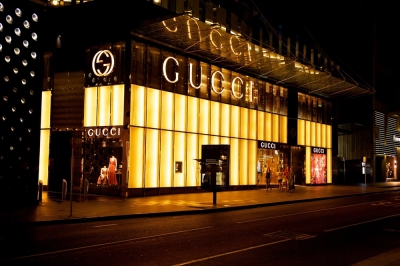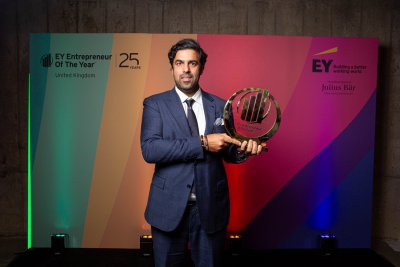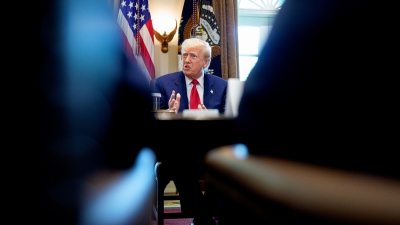Siemens is an industrial giant headquartered in Germany with businesses in fields such as industry, infrastructure, transportation and healthcare. It started its digital transformation in the early 20th century and is committed to becoming a technology company focusing on electrification, automation and digitalization.
In order to enhance the company's technological genes, Siemens has made major adjustments to its organizational structure over the past two decades, divesting its home appliance, oil and gas, and power generation businesses, and listing its medical business independently. In May last year, Siemens also agreed to sell its motor and large-drive systems company Innomotics for a valuation of 3.5 billion euros.
After drastic changes, the Siemens Group is currently mainly composed of Digital Industry (DI), Smart Infrastructure (SI) and Mobility businesses. It holds more than 70% of the shares of Siemens Healthineers and is still considered a conglomerate.
In 2024, global industrial orders declined, especially in the Digital Industries sector, where profits plummeted by one-third. Bosch, ABB, and GE are all cutting spending. While Siemens' core digital business is expanding strongly, its development speed is dragged down by some other businesses, and its performance shows a trend of "software rising and hardware falling". Siemens had to announce 5,600 layoffs, the largest personnel adjustment in nearly seven years.
Roland Busch, president and CEO of Siemens AG made a difficult decision at the Munich headquarters building to continue betting on "Industrial AI".
On November 14th, 2024, Roland Busch announced at the annual performance meeting that he would accelerate the transformation and launch the "ONE Tech Company" program.
"We need to leap not step," Roland said at CES 2025.

01 The second largest acquisition in history
In less than 5 months, Siemens quickly acquired a listed company worth $10 billion.
On March 26th, local time, Siemens confirmed the completion of its acquisition of Altair, a provider of industrial simulation and analysis software, significantly ahead of the original plan to complete the acquisition in the second half of 2025.
Altair, headquartered in the United States, is a well-known company in the fields of computational science and artificial intelligence (AI). It provides software and cloud computing solutions in the fields of simulation and analysis, data science and AI, and high-performance computing. It was listed on Nasdaq in 2017.
According to the acquisition agreement disclosed by the two parties on October 30th, 2024, Siemens needs to pay Altair shareholders a cash consideration of US$113 per share, with a total equity value of US$10.6 billion.
The $113 per share price represents a 19% premium to Altair's closing price on October 21st, 2024, and the $10.6 billion price is 14 times Altair's projected 2025 sales and 25 times its projected operating earnings.
In addition to spending tens of billions of dollars in cash premium to acquire Altair, Siemens also attached great importance to this acquisition in its statement on March 26th, calling it "the cornerstone of Siemens' ONE Tech Company program."
Siemens pointed out that adding Altair technology to the Siemens Xcelerator open digital business platform will create the world's most complete AI-driven industrial software portfolio and further enhance its own Digital Twin business.
This is also Siemens' second largest acquisition in history. In August 2020, Siemens Healthineers announced the acquisition of Varian Medical Systems of the United States for US$16.4 billion, which was completed in April 2021.
"Through this acquisition and continued R&D investment in software, AI-enabled products, connected hardware and sustainable development, Siemens is continuously increasing its capital allocation to strategic growth areas." According to Siemens, increasing the proportion of digital business revenue is an important task for Siemens at present, and the acquisition of Altair is one of them.
02 Global Signing
On the other side of the layoff controversy, Siemens has been making remarkable progress against the trend in its transportation, medical and other business areas - from light rail orders in the United States to mass deliveries of freight locomotives in Europe, from the implementation of medical imaging technology in India to the innovation of the first battery locomotive in North America, Siemens has demonstrated its resilience in industrial transformation with intensive global contract signings.
US transportation infrastructure upgrade: $164 million light rail vehicle order
In Ohio, Siemens Mobility recently won a key order: 18 additional S200 light rail vehicles for the Greater Cleveland Regional Transit Authority (GCRTA), bringing the total order to 48 vehicles. This $164 million contract will completely replace the old fleet that has been operating in the area for more than 40 years. The new vehicles are equipped with ice cutting technology, a double-height platform adaptation system and an intelligent temperature-controlled cockpit, designed specifically for Cleveland's extremely cold climate. They are also equipped with bicycle racks and barrier-free facilities, echoing the United States' "Infrastructure Decade" projects' pursuit of sustainable transportation and community inclusiveness.

"These American-made light rail vehicles will provide Cleveland passengers with a travel experience that transcends time," said Marc Buncher, president and CEO of Siemens Mobility North America. It is worth noting that Siemens' California plant has started production. After the first batch of deliveries in 2026, Cleveland's 33-mile rail network will bid farewell to the history of "dual-fleet operation" and achieve full system standardization.
A revolution in European rail freight: order for 50 Vectron locomotives
In Europe, Siemens has added another significant weight to its framework agreement with the leasing giant Northrail - the purchase intention of 50 Vectron locomotives, which will promote the low-carbon transformation of European rail freight. This cooperation not only includes the firm order of 15 locomotives and 8 years of full life cycle service, but also realizes preventive maintenance through the Railigent X intelligent monitoring system. The cumulative sales of the Vectron series have exceeded 2,600 units, covering the railway networks of 20 countries, confirming its positioning as the "blood vessel of European freight".
Andre Rodenbeck, CEO of Siemens Locomotive Business, pointed out that the order marks "an extension from equipment sales to service ecology." As the EU's "Green Deal" promotes the decarbonization of land transportation, RIVE Private Investment partner Camille Brunel expects this cooperation to "accelerate the shift of transportation modes to rail."

North American Innovation Test Site: 13 battery locomotive orders
The New York Metropolitan Transportation Authority (MTA) recently announced that it has ordered 13 battery-electric hybrid Charger locomotives from Siemens for the "Penn Station Access" lines to be opened in 2027. This first "European technology localization" product in North America can seamlessly switch between overhead line power supply and battery mode, solving the century-old problem of incompatibility between the power grids of Grand Central Terminal and Penn Station. Metro-North President Catherine Rinaldi called it "a new benchmark for environmental friendliness and reliability", and MTA Vehicle Director Tim Mullgan predicted that it will "subvert the North American railway technology path".
India's healthcare universal accessibility: $120 million MRI order
In the medical field, Indian diagnostic giant Aarthi Scans & Labs announced that it would invest more than 1 billion rupees (about 120 million US dollars) to introduce Siemens' helium-free MRI technology. This revolutionary equipment significantly reduces operation and maintenance costs and site requirements by eliminating the dependence on liquid helium, and is expected to extend high-end imaging diagnostic services to second- and third-tier cities in India. Although the specific details of the cooperation have not been disclosed, this investment aligns with Siemens Healthineers' strategy of "bringing technology to lower-tier markets" and may serve as a model for the upgrading of medical equipment in emerging markets.
Secured the largest order in history jointly with GE
On March 30th, the Iraqi government announced that it had reached two historic agreements with Siemens and GE, with a total power generation capacity of 34,000 megawatts, setting a record for the largest single order in the country's energy history. This cooperation is not only a turning point for Iraq to get rid of its energy dependence, but also marks that the competition among international companies in the Middle East infrastructure market has entered a white-hot stage.

Siemens' 10,000 MW project focuses on optimizing the energy structure and modernizing the power grid. In addition to building new gas-fired power plants, the focus of cooperation includes the transformation of key facilities such as the Besmaya Power Plant near Baghdad and the deployment of high-efficiency gas turbines. Siemens pointed out at the 2024 financial report meeting: "Middle Eastern countries are shifting from simply purchasing equipment to seeking full life cycle solutions." This trend is clearly reflected in the agreement: Siemens will not only provide equipment, but will also assist Iraq in building smart substations, upgrading the national power transmission and distribution network, and establishing a real-time dispatching system for gas-fired power generation, striving to increase gas utilization by more than 30%.
03 Three new “centers”
In the wave of globalization and digitalization, industrial giant Siemens is reshaping its development map with a "centralized" layout. Recently, the German company announced the establishment of three new "centers" in Munich, Egypt and the Middle East, and Shenyang, China, focusing on the future office ecology, medical technology innovation, and industry-education integration talent training. This series of actions not only demonstrates Siemens' in-depth response to technology iteration and sustainable development, but also reflects its strategic wisdom of "deepening localization and global linkage".
Munich's new headquarters: a sample of future offices with a carbon-neutral vision
In the Werksviertel-Mitte near Munich East Station, a modern office center covering an area of 33,000 square meters will be completed in 2027, becoming another important base for Siemens after its headquarters in Perlach. The location itself is symbolic: as one of Munich's largest urban renewal projects, the Werksviertel district is transforming from an industrial relic to a gathering place for innovative companies. Siemens will accommodate about 4,000 employees here and introduce its independently developed sustainable building technology, from energy efficiency to carbon footprint management, to fully implement its 2030 carbon neutrality commitment.
"The new office space will not only provide a modern environment for flexible collaboration, but will also serve as a testing ground for inclusiveness and low-carbon concepts," said Veronika Bienert, director of Siemens and head of the real estate department. This design echoes the "new work concept" promoted by Siemens - the hybrid office model reduces space requirements, but requires the reconstruction of the social and innovative functions of the physical space. The project also cooperated with Frankfurt architectural firm Holger Meyer and Cologne developer Pandion to connect surrounding commercial and cultural facilities through public trails to create a three-dimensional ecosystem of "office-life-innovation". It is worth noting that the coordinated layout of Munich's four bases (Werksviertel, Garching Technology Center, Allach Transportation Technology Center and the city center headquarters) forms a technology radiation network, strengthening Bavaria's position as the core industrial area of Europe.

Cairo Medical Center: Digital technology reshapes regional healthcare landscape
The first radiology equipment R&D center in the Middle East and Africa has landed in Egypt, marking a key step for Siemens Healthineers to deepen regional cooperation. The center will integrate advanced imaging technology and artificial intelligence diagnostic systems, aiming to address the pain points of early disease screening in the Middle East. Egyptian Minister of Health Khaled Abdel Ghaffar pointed out: "The private sector is the pillar of medical innovation, and we need technology to shorten diagnosis time and improve cure rates." Siemens Healthineers CEO Amr Kandil promised that the center will be equipped with the latest equipment and connected to six hospitals through a national monitoring platform to achieve intelligent scheduling of medical resources.
This layout has dual strategic significance: first, Egypt, as the gateway to Africa, can radiate to surrounding markets with scarce medical resources; second, it combines equipment development with clinical data to provide localized training scenarios for AI-assisted diagnosis models. Siemens uses this to consolidate its technological voice in the global medical equipment market while responding to the urgent need for precision medicine in emerging markets.
Shenyang Teaching Center: Industry-education integration paradigm in the era of Industry 4.0
In Shenyang, an important industrial city in northeast China, the Automation Technology Teaching Center jointly built by Siemens and Shenyang Institute of Technology attempts to solve the global problem of shortage of intelligent manufacturing talents. The center introduces cutting-edge training platforms such as "digital twin" and "industrial metaverse". The course system covers the entire chain from PLC programming to industrial Internet, and is jointly taught by Siemens engineers and university teachers. This "technology standard implantation education" model enables students to master practical skills such as production line debugging and fault diagnosis in virtual simulation, and can directly connect with intelligent manufacturing system integration positions after graduation.

The more profound significance lies in that the center will become the "nerve endings" of Siemens' industrial ecology - it not only reserves talents for its China localization strategy, but also transforms the German Industry 4.0 experience into teaching resources that adapt to the upgrading of China's manufacturing industry. This school-enterprise cooperation model may redefine the value of technical education: the deep integration of the education chain, industrial chain and innovation chain will shift talent training from "lagging behind the industry" to "resonating with technological innovation."
04 Conclusion
When acquiring Altair, Siemens noted that the acquisition consolidated Siemens' position as a leading supplier in the high-growth product lifecycle management (PLM) and EDA simulation markets and strengthened Siemens' number one position in industrial software.
Overall, although layoffs in the digital industry sector reflect weak market demand in China and Germany and fierce competition in the industrial automation track, Siemens is proving its ability to "shrink and expand" in parallel through orders in the fields of transportation and medical care. As analysts said: "When traditional advantage businesses encounter headwinds, bets on emerging infrastructure and sustainable technologies are reshaping Siemens' growth curve." From the icefield tracks in Cleveland to the MRI examination rooms in Mumbai, the global order map of this industrial giant has already outlined the survival rules in the post-layoff era - using technological barriers to penetrate cyclical fluctuations and using localized services to bind long-term demand.
















